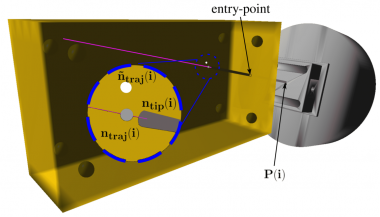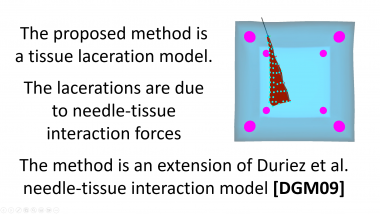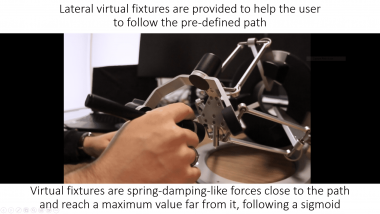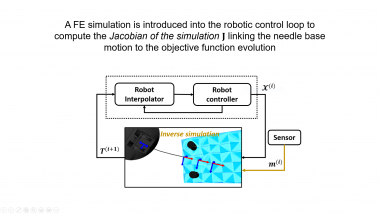
ICRA 2021 Workshop
Learning robotic needle steering from inverse finite element simulations
ICRA 2021 Workshop
Research /
Learning robotic needle steering from inverse finite element simulations
Tissue motion compensation during robotic needle steering is a challenging research topic. While the deformable non-linear coupling between needle and tissue is captured by simulation-based control strategies, they increase significantly the computational cost of the control. In this work, we rely on machine learning methods to enable autonomous robotic needle steering with very low computation times. We propose to use an Extreme Learning Machine (ELM) to learn an inverse model which accounts for needle-tissue interaction. The ELM trains with synthetic data generated from multiple needle insertions controlled by inverse finite-element simulations.


